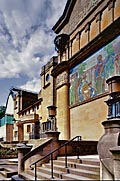 IntroductionA project to digitize the ledgers of the C. Wheatstone & Co. concertina factory at the Horniman Museum, LondonThe Horniman Museum was established as a public museum in 1901, when it was given to the London County Council as representing ‘the people of London’. The donor, Frederick Horniman, included some two hundred musical instruments in the gift of his collection and the Museum building. Today the Museum’s community of stakeholders is a global one, and the collection numbers over 8,000 examples of sound-producing instruments from all over the world. The Horniman is one of the few UK museums that collects instruments of popular music. In 1996, the Museum acquired a large collection of concertinas, a bellows-blown free reed instrument that was the invention of another illustrious Victorian. Sir Charles Wheatstone (1802-1875) was a physicist best known for his work on the electric telegraph, and as an inventor of scientific instruments. Generous sponsorship from the UK’s Heritage Lottery Fund and the Museums and Galleries Commission / Science Museum PRISM Fund enabled the Horniman Museum to purchase almost all the contents of the Concertina Museum in Belper, Derbyshire. The collection comprised over six hundred free reed instruments, together with an archive that included concertina music, recordings and postcards of famous concertina players. Among the highlights are twelve ledgers from the C. Wheatstone & Co. concertina factory dating from 1834 to 1891. They were saved from destruction by Henry Minting, one of the managers of the company. More recently, Steve Dickinson, concertina maker and owner of C. Wheatstone & Co., generously loaned five more ledgers to the Horniman Museum, covering the output of the factory for the years 1910 to 1974. These 17 notebooks chronicle aspects of the production and sales of concertinas by the Wheatstone factory from 1834 to 1974 — albeit with some gaps. They contain a wealth of detail for the industrial and the social historian, including the payments made to tradesmen who provided supplies and services to the Wheatstone workshops. The prices of raw materials used in the manufacture of concertinas are documented here. The ledgers also chart the weekly wages paid to employees such as Messrs Lachenal, Dove, Chidley and Nickolds, all of whom later left the Wheatstone factory to set up their own concertina workshops, in competition with the parent company. 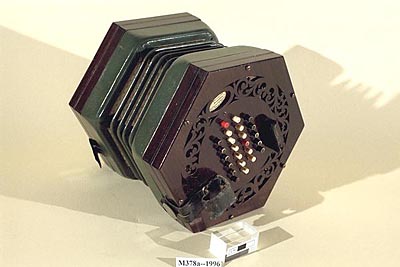
This early Wheatstone concertina, serial No. 1161,
was provided with two fitted cases.
(Museum no: M378a-1996. Photo: Horniman Museum.)
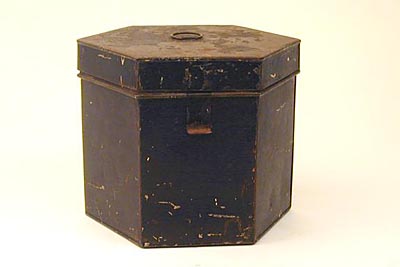
One case is the usual leather-covered wood, but the
second (above) is an outer "termite proof" metal case.
(Museum no: M378c-1996. Photo: Horniman Museum.)

The ledger entry records its sale on 12 September
1846 to Captain Charles Stanley, who would thus be
prepared for his military duty, probably in India.
The ledgers are also of potential interest to a global public, as the concertinas of the Wheatstone factory were exported all over the world (some of them in custom-built termite-proof cases). Most of the ledgers list the serial numbers of the concertinas and their dates of sale by the Wheatstone workshop. Until 2003, anyone who wished to date a Wheatstone concertina had to visit the Horniman Library in south London in order to cross reference the serial number with an entry in one of the original ledgers, or request a curator to undertake this task. Now anyone with Internet access can obtain this information, using the digitized images of the ledgers that are on this website. (A CD with the digitized images of the ledgers can be purchased on-line from the website or from the Horniman Museum shop.) 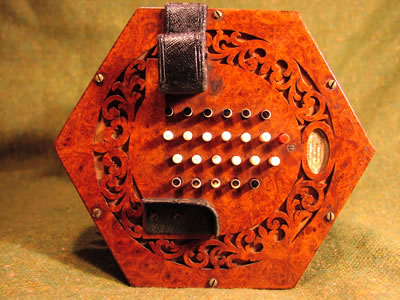
English concertina by C. Wheatstone & Co.,
London, serial No. 649, in Amboyna wood.
(From the collection of Stephen Chambers).
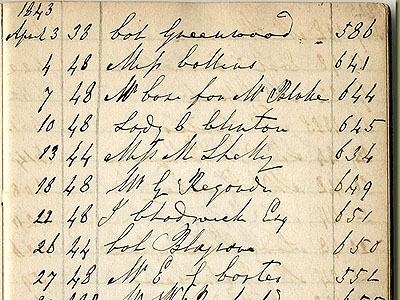
The ledger entry shows that No. 649 was first sold
18th April 1843 to the virtuoso Giulio Regondi.
Among the stated aims of the Horniman Museum are those of continually increasing access to its collections, and promoting research in them. And like all museums, the Horniman is also dedicated to the preservation of the objects with which it has been entrusted. The project to provide Internet access to the C. Wheatstone & Co. factory ledgers furthers all these aims. The records of visits to the website cited in Robert Gaskins’ article show just how extensively the scans of the ledgers have been consulted by Internet users. The 20th century ledgers loaned to the Museum by S. Dickinson were digitized and put up on www.horniman.info in April 2003. By the end of the first two years, the website had served 230,845 pageviews from just those five ledgers to visitors from 88 different countries. The ledgers are far easier to view online than as three dimensional objects, since quality of the colour images is such that enlarging them yields a wealth of detail, helping the reader to decipher the cryptic entries in spidery copperplate handwriting, and the marginalia. There is scarcely any demand now to view the original ledgers, and consequently the wear and tear on these fragile paper records has been reduced to almost nil. The aims of the Museum to promote research in the collections are also fulfilled by the existence of the digitized ledgers. A number of experts in different subject areas, based in Europe and the US, are already working on their own research projects associated with the history, development and music of the instrument. The information gleaned from these experts’ consultations of the digitized ledgers is helping to fuel the work of their transcription and analysis. 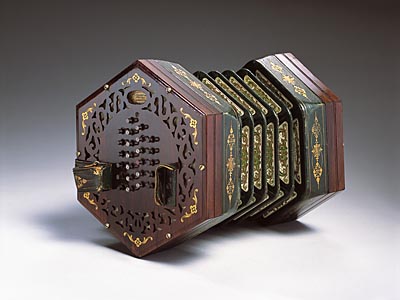
A concertina with rosewood ends, brass inlay, glass
buttons, and gilt-embossed green leather bellows.
(Museum no: M319a-1996. Photo: Heini Schneeberli.)
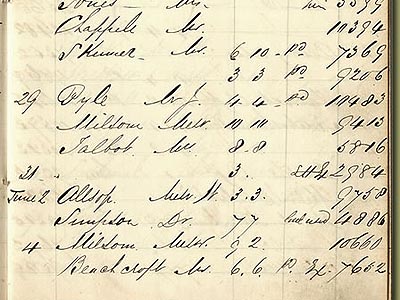
The ledger entry shows that the price for No. 10660
paid by Messrs Milsom on 4 June 1858 was £9 2s.
The bold project of digitizing the ledgers was devised by a uniquely dedicated and gifted individual, Robert Gaskins, to whom the Horniman Museum owes a profound debt of gratitude. Mr Gaskins planned the entire project, he created the scans from the original documents, processed the digitized images to enhance their readability, created a database to generate the webpages, and prepared the website and CDs. He has also written a step-by-step account of the project, as we feel that there are valuable lessons to be learned here, not only by the Horniman but also by other institutions or individuals with fragile paper archives who may wish to publish them as electronic files and preserve the originals. Website publications such as these represent a 21st century key that can unlock information and release it into a public domain, the scope of which was unimaginable ten years ago. Once digitized and prepared for presentation on the web, the same images can be very easily used to create any desired stable three-dimensional medium, such as colour transparencies and any kind of microform storage. The principle of increasing public access to museum collections is not only endorsed but highlighted as an imperative by funding bodies and professional organisations, such as the UK’s Museums Association, which has a stated aim to ensure that ‘more people have more opportunities to engage with museum collections’. The Horniman Museum is committed to providing learning opportunities to the community at large, and is specifically committed to broadening its service to members of the community who do not normally access cultural institutions. The project to digitize the C. Wheatstone & Co. concertina factory ledgers has demonstrated one way of realising these aims at minimal cost. Margaret Birley
Keeper of Musical Instruments
Horniman Museum, London Copyright © 2005 Margaret Birley
Reprinted from http://www.horniman.info |